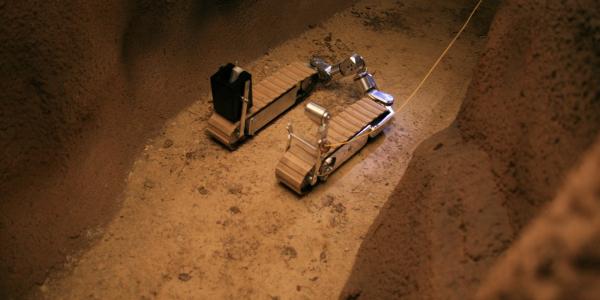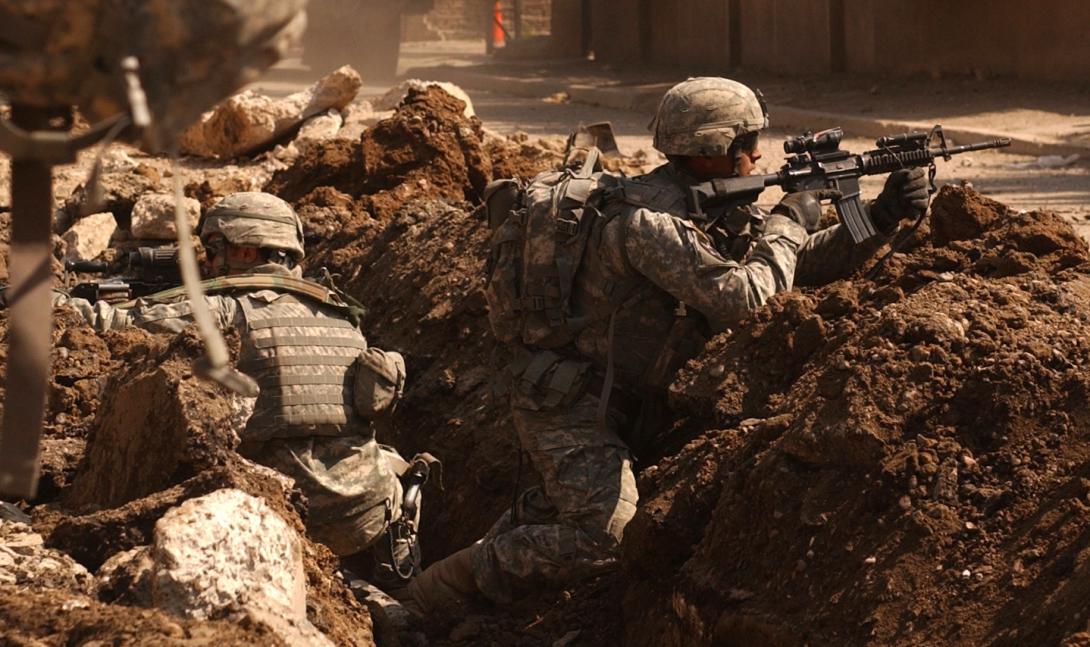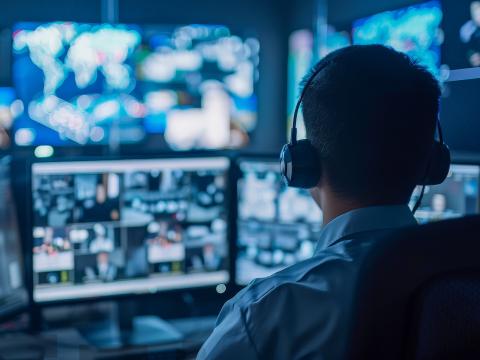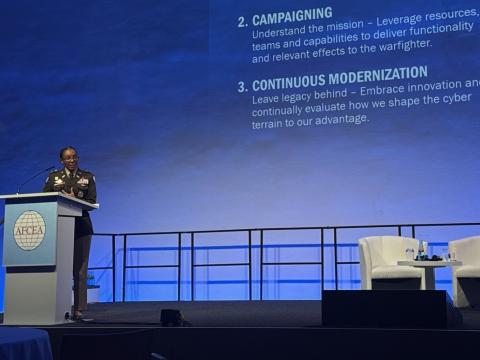Wanted: Asia-Pacific Partners in Science
A U.S. Army research and development organization in Tokyo is forming partnerships across the Asia-Pacific region—including in India, Malaysia and Vietnam—to help support warfighter needs and strengthen ties to neighboring nations.
One partnership involves multiple U.S. organizations that collaborated to modify and field a robotic system capable of working in tunnels or underground facilities to counter weapons of mass destruction (WMD). Researchers have fielded an interim solution, and a program of record is possible.
The 2nd Infantry Division (ID) in Korea needed a subterranean robot, but the systems used in the deserts of Afghanistan and Iraq were not up to the job. So scientists with the Army’s Research, Development and Engineering Command (RDECOM)-Pacific coordinated an effort to adapt and field an existing system. “For Korea, we’ve had a need for some time to look at various aspects of the counter-WMD mission. There’s a piece of this that involves the subterranean, where we have facilities that need to be investigated, and to send troops in there is not very safe,” reports Col. Ernest “Lee” Dunlap, USA, director, RDECOM-Pacific. “When we send current robotic systems in there like we have in Afghanistan, they don’t function. You have no means of communication. The cameras are inadequate. The communications packages fail.”
Last January, Col. Dunlap’s team established a cooperative research and development agreement with the military robot division of iRobot, a unit that has since been sold to investors and is expected to spin off into its own company. The RDECOM-Pacific effort drew support from other organizations, including the Rapid Equipping Force, the Defense Threat Reduction Agency, the Army’s Asymmetric Warfare Group and the Tank Automotive Research, Development and Engineering Center (TARDEC), another part of RDECOM.
“TARDEC was interested in looking at technology that would support subterranean application. It’s a really big thing today,” Col. Dunlap says. “That industry partner … built a system that satisfies that gap, and it is actually able to function as desired by 2nd Infantry Division to satisfy that counter-[WMD] mission set.”
Enhancements for the subterranean mission include a mesh network. Although the 2nd ID warfighters are happy with what they have, the system could be better, the colonel says. “We’re trying to make it more of an enduring solution where it’s a program of record, where it’s sustainable, where it has more capability. Once we get this thing moving forward, we have these other deficiencies we would like to make better with continuous improvements to the technology. That’s underway today,” he reveals.
Col. Dunlap credits those other organizations as being essential to this project. “The guys on the ground wearing a green suit like I do don’t know how to engage all these different equities and get them in place. So we help them along the way. We’re at the point where we’re actually able to procure these systems … and satisfy that capability gap that existed years ago and now no longer does,” he says.
Another collaboration involves the U.S. Navy. The Office of Naval Research seeks to open a new office in India at the same time RDECOM-Pacific will be opening an International Technology Center there. The Army already has such centers in Japan, Singapore and Australia.
Although the Army, Navy and Air Force have co-located scientists and engineers in Tokyo so they can work closely together, in India the Army and Navy will collaborate but intend to open separate offices in New Delhi and Hyderabad. “What we’re missing is an expansion into India. There has been so much emphasis lately at [the Office of the Secretary of Defense] on engagement and collaboration with India … that we, as well as the Office of Naval Research, are acknowledging that it might make sense to have a permanent presence in India. We are both pursuing offices in cities within India to support the same mission sets that our offices in Australia, Singapore and Japan currently do,” Col. Dunlap says.
Army and Navy officials decided that separate offices make sense for two reasons. First, India is a massive country with numerous potential partnership opportunities. “The embassy had asked us to provide support directly in New Delhi and also to have a strong presence in Hyderabad. So, one of us is going to go to Hyderabad and the other one will go to New Delhi. India is so huge—there are, in fact, 530 universities—so it’s very difficult to cover that much expansiveness,” Col. Dunlap explains.
Second, gaining approval for such offices is no easy task, so doubling down on the chances might help. “It’s hard to get approval to get U.S. government personnel permanently placed in their country. It’s a bureaucratic process that simply takes a long while. We want to not put all our eggs in one basket, so we’re going along parallel paths with similar end states where we will have proper touch points to ensure proper coordination,” Col. Dunlap states.
The two services are following similar three-phase approaches. The first phase was to come up with a plan and gain acceptance. Now, Col. Dunlap’s team seeks to hire an Indian scientist with a doctorate degree and experience working within a research and development organization. For the final stage, scheduled to be completed in fiscal year 2018, the Army will assign a lieutenant colonel to the office. Ultimately, the office will include three people.
In addition to opening the International Technology Center, Col. Dunlap’s group is exploring possible collaborations with countries that may not be known as hotbeds of technological innovation right now but show promise. “What we’re really emphasizing lately is our emerging partner countries: Malaysia, for example. We’ve had very limited engagement with them, but our assessment is—and other services’ assessments are—that they are an up-and-comer,” Col. Dunlap explains. “We don’t know where they’re going to be in 15 years, but we certainly want them to look upon us as a partner as opposed to someone else throughout Asia—China, for example.”
Malaysian officials envision creating a center of excellence in the country for evaluating technologies. “We have brought in our fellow stakeholders … throughout the RDECOM community to give blocks of instruction to Malaysia on various courses that they have, from developmental testing all the way through operational testing,” the colonel states. “This has really been a springboard for future engagements with Malaysia in a number of other areas.” He adds that the effort has drawn “significant interest” from Pacific Command and the U.S. Army Pacific “from an operational perspective.”
He cites Vietnam as another up-and-coming nation, saying the Army recently has experienced unprecedented levels of engagement with Vietnam’s science and technology community. “We laid the course for future discussion and dialogue to the point where now we are looking at … research opportunities in the future along the lines of humanitarian assistance and disaster-relief support. We’re looking at potentially ... working with Vietnam in terms of food science, power and energy and water purification. Things like that could have mutual benefits,” Col. Dunlap says.
Despite growing U.S.-China competition in the region, the two countries also cooperate on some science and technology efforts. “We try to embrace China as a partner from a benign perspective, not from a military application perspective. But we do a lot of things in the basic research community that China and Hong Kong, in particular, have partnered with us on. Think along the lines of the medical community, for example,” Col. Dunlap points out.
Other cooperative efforts include the Trusted Operation of Robotic Vehicles in a Contested Environment program with Australia, long-range precision fires with Japan, a project on countering unmanned aerial systems (UASs) with Korea and a search for composite gun barrel technology with Taiwan. RDECOM-Pacific accomplishments include support of coalition exercises that identify and assess technologies to meet warfighter capability gaps, such as a jungle antenna, a soldier-borne sensor, the Mobile User Objective System, a water purification system known as Water in a Box and clip-on thermal imagers. Col. Dunlap lists continuing capability gaps as long-range precision fires, counter-UASs, counter-WMDs, subterranean operations, bulk fuel distribution and 2nd ID range safety.
In fiscal year 2016, RDECOM-Pacific supported or led 250 science and technology engagements throughout the Pacific Command area of responsibility and awarded 28 research and development seed projects to foreign academic institutions. It also facilitated 16 formal project agreements valued at $360 million. The organization employs about two dozen military and civilian personnel, including local Japanese employees.






Comments